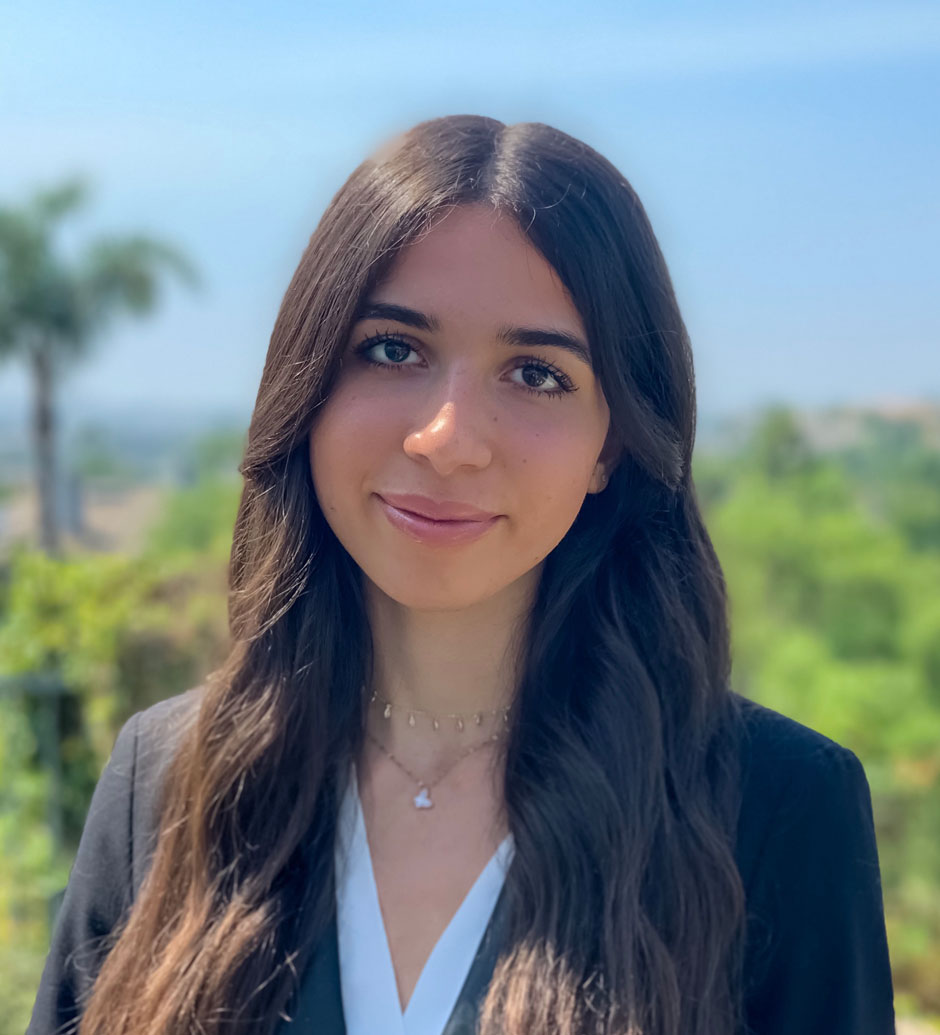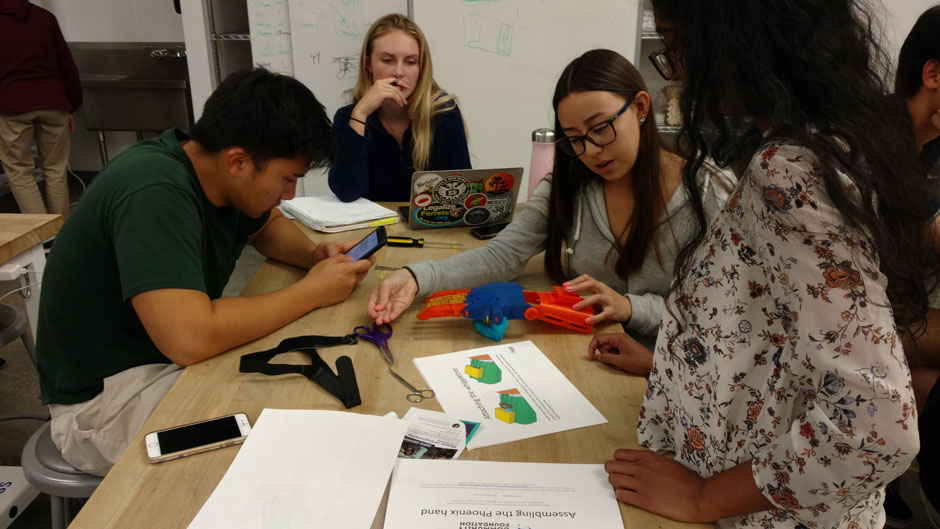Undergraduate Profile: Tamara Jafar
Twin Passions of Biology and Design
By Kirsten Mickelwait
 Tamara Jafar, IB graduating senior. |
Berkeley is full of overachievers. But few could compete in that category with Tamara Jafar, who will receive her BA in May with a double major in Integrative Biology and Public Health, and a minor in Human Centered Design. In addition to her triple-sized academic load, she serves as a student community director and recruitment coordinator for the Howard Hughes Medical Institute (HHMI). In that role, she designed and taught a DeCal course, founded the Berkeley BioDesign Community, helped IB to evaluate undergraduate discovery experiences, and entered a project into an international biodesign competition. Ultimately, she hopes to use bio-inspired design to find solutions that will address public health challenges facing at-risk populations.
After taking Professor Robert Full’s course on bioinspired design in her freshman year, Jafar was so excited by the subject that she created a syllabus for a course based on her interest in biology “but with more of an engineering and design focus.” Full loved the idea and, because Jafar was then too junior to teach the class on her own, introduced her to Tia Lamore, who was a year ahead of her. The two women taught the class for two semesters and this year Jafar taught it on her own.
The two-unit DeCal course, Bioinspired Design (IB32/L&S30), teaches an inspiration process, using nature as an innovation strategy to translate principles of function, performance, and aesthetics from biology to human technology. Jafar researched and developed course materials, lectures, and labs; led workshops; developed and tested lab exercises; and organized guest speakers.
The course is built around workshops and team projects. “The main takeaway I wanted was for the students to acquire hands-on experience,” she says, developing skills like laser-cutting, Adobe Illustrator, and Fusion 360. “First I teach it, then they do it.” Jafar’s favorite project was creating 3D hand prosthetics in the first year she taught the class. Each student printed a finger and over three weeks the class assembled the entire hand using their fingers, other printed parts, fishing line, and dental bands.
“All the students were so interested and engaged,” Jafar says. “They’d stay after class to ask questions, and everyone met up outside of class to work on the project and send us selfies of their work.” Jafar coordinated a hierarchical mentoring program for the class and assembled an undergraduate volunteer mentor group to assist student teams with their designs and maker space equipment.
Another project within her HHMI role was creating and running the Berkeley BioDesign Community. Before COVID, the student organization met weekly to work on “design-athons,” listen to guest speakers, and collaborate with other student clubs. Jafar is currently working on the group’s website, developing new projects for the DeCal course, and identifying other design competition opportunities.
 Students creating 3D hand prosthetics in Bioinspired Design, a DeCal course Jafar teaches. |
In addition, Jafar led a research team whose project for an international biodesign competition went on to the National Science Foundation’s I-Corps program. Using synthetic hornet silk—mimicking the material that hornets produce to keep their nests safe—her team used its electricity-conducting properties to create sustainable, thermoelectric, and thermoregulatory shelters. The project made it to the competition finals and the team is now working on turning the idea into a startup and applying for a patent.
Finally, Jafar has just finished working with Professor Full to write a grant on discovery experiences for IB undergraduates. Jafar provided her undergrad perspective to identify what students want, what’s missing in the current curriculum, and how to address that gap. “I have a lot of ideas on how to change or add to the major, new classes and unique opportunities,” she says. At this writing, the grant was among the finalists being considered.
With such an accomplished undergraduate career behind her, what are her future plans? Jafar hopes to work for two years in research, then will apply for her PhD in immunology. The academic break will allow her to further refine her long-term goals.
Her advice to fellow undergrads is to be similarly open about creating their own paths. “IB is really vast and interdisciplinary, so take the time to explore your interests and don’t get too caught up in your grades,” she says. “That’s honestly what got me through Berkeley.”
Back to Main Spring 2021 Newsletter Page







